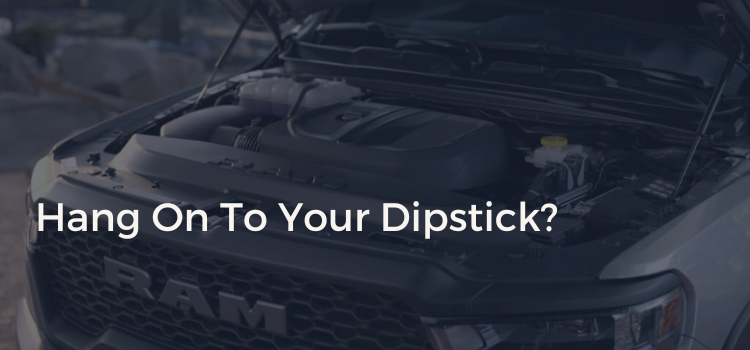Hang On to Your Dipstick?

One of the oldest automotive components is being replaced by high tech, but is that a good thing?
Since the advent of the combustion engine, the engine oil dipstick has been a constant feature. Regardless of the number of cylinders or their configuration—whether V-shaped, in-line, horizontally opposed, or even in rotary engines—the dipstick was there. Checking the engine oil level involved a simple yet manual process of lifting the hood and using this trusty device.
However, this straightforward tool is now becoming a rarity, replaced by electronic oil sensors that allow drivers to check their oil levels from a submenu on the dashboard information panel. This trend began with luxury vehicles from brands like Mercedes Benz, BMW, and Audi, as well as many Lincolns and Cadillacs, which offer vehicles without dipsticks. These manufacturers correctly assumed that most of their customers would prefer not to get their hands dirty with a manual oil check.
Now, Stellantis is introducing their first internal combustion “3.0 Hurricane” engine pickup without a dipstick for the 2025 Ram. One of the primary reasons Stellantis has eliminated the dipstick in its Hurricane engines is the integration of advanced oil monitoring systems. They claim that their engines have tighter tolerances and thus won’t consume oil. Modern vehicles are increasingly equipped with electronic sensors that provide real-time data on oil levels and quality. However, the typical pickup owner differs from the luxury car buyer, and many are not pleased with this change, as evidenced by various YouTube videos and comments.
Today’s auto manufacturers are fixated on reducing weight and costs. This drive has led many to eliminate spare tires in favor of run-flat tires. However, this is a somewhat flexible decision, as aftermarket kits with space-saver spares are available for those who prefer having a spare tire on hand. The elimination of the engine oil dipstick, however, is a different story. This decision, made by engineers, leaves no room for a manual backup to the electronic sensor that could potentially fail.
Maybe I’m in the minority here, but does eliminating engine oil dipsticks seem like the right move? And let’s be honest, there’s something oddly satisfying about pulling it out and seeing that golden-brown oil clinging to its metal body. It’s a simple yet essential part of car maintenance, keeping our engines happy and healthy. So, here’s to the dipstick, the true MVP of the automotive world. Let me know your thoughts in the comments!
